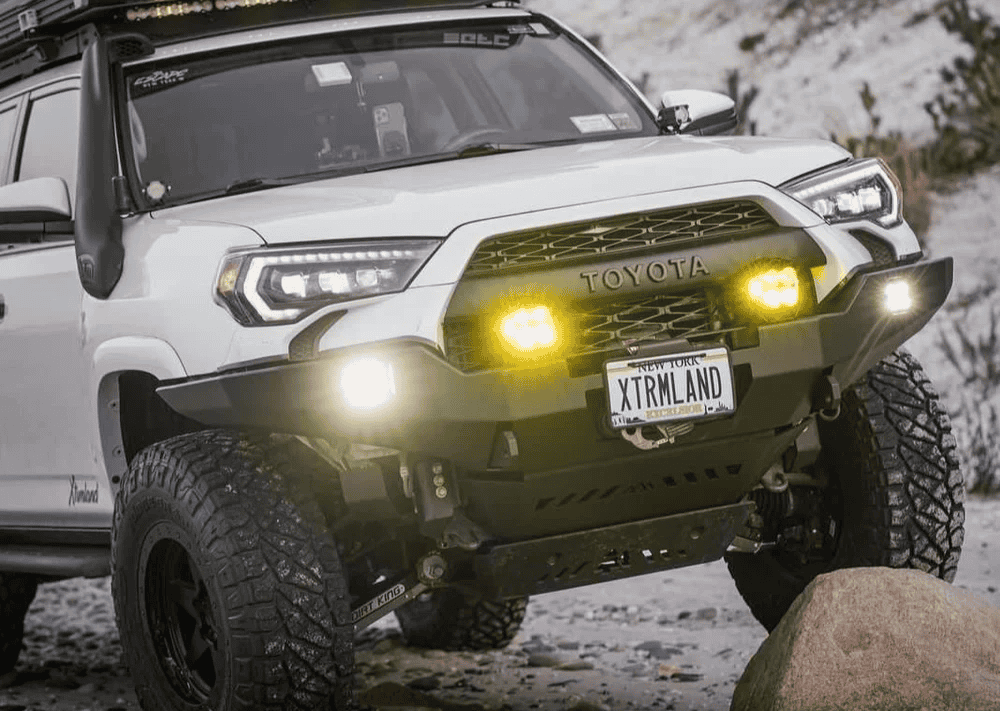Overland Vehicles

Aluminum rewards good technique and exposes shortcuts. Its oxide skin melts at a far higher temperature than the base metal, so surface prep is non negotiable. The material conducts heat quickly and expands more than steel, which means heat input, joint fit, and fixturing matter from the first tack to the final pass. Shielding gas purity and torch angle influence bead appearance and porosity, especially on thin sections and castings.
Process choice follows the job. AC TIG gives precise puddle control and cleans oxides in real time, ideal for thin sheet, small brackets, and cosmetic joints. Pulsed MIG with a spool gun or push pull setup excels at speed on thicker material and long seams, with modern power sources smoothing out starts and stops. For plate and extrusions common in structural racks, proper pulse settings and wire feed consistency reduce spatter and burn through.
Most fabricators see 5 series and 6 series sheet and extrusions. Alloys like 5052 form well and resist corrosion, while 6061 offers higher strength but softens near the heat affected zone. Castings show up in 3xx alloys and need careful prep to manage porosity. Filler selection is a big lever. ER4043 wets smoothly and helps resist cracking in many 6 series joints. ER5356 delivers higher as welded strength and better color match for anodized parts, but is more sensitive to elevated service temperatures. Always confirm alloy pairing with a compatibility chart and the service environment.
TIG shines when joints are visible or tolerance is tight. Use a sharp, clean tungsten and balance cleaning to penetration based on oxide thickness. For MIG, keep stickout short, maintain push technique, and stay within the recommended wire diameter for the thickness. Dry storage for wire and cleanliness for joints reduce porosity. Preheat helps with thick stock and castings, but keep it modest to limit grain growth.
Start with clean material. Degrease, then mechanically remove oxides with a dedicated stainless brush or fresh abrasives. Fit up drives results, so maintain consistent gaps and land thickness. Backing bars and copper chill blocks pull heat from thin sections, while solid fixtures hold parts true as the weld shrinks. Sequence welds to pull distortion back toward square, and use short, controlled beads instead of long runs that dump heat into one area.
Design choices affect durability. Favor generous radii over sharp inside corners. Stagger joints away from high stress zones and avoid abrupt thickness transitions without a ramp. For fasteners in aluminum, plan for inserts, bushings, or bonded anchors to share load and protect threads.
Aluminum moves when heated, then locks in as it cools. Tack strategically, weld from the center outward, and alternate sides to balance pull. Use stitch welding where continuous welds are not required by load. Fixturing with strongbacks and clamps keeps panels flush, and heat sinks or temporary chill bars help on small parts and thin sheet.
After welding, remove soot and smut with a stainless brush or nylon abrasive. Blend lightly to retain section thickness. For long term protection, consider anodizing for abrasion resistance or powder coat over proper conversion coating. Isolate aluminum from dissimilar metals with gaskets, nylon spacers, or sealed fasteners to reduce galvanic corrosion, especially in road salt or coastal environments.
Good welds look consistent and perform under stress. Visual inspection checks toe fusion, fillet size, and the absence of undercut or overlap. Dye penetrant helps reveal surface cracks, and pressure or leak testing validates sealed joints. Where applicable, follow AWS D1.2 for structural aluminum work, including joint qualification and welder proficiency. Remember that heat can reduce temper near the weld in 6 series alloys, so size joints and gussets with that in mind, not just catalog strength.
In vehicles and overland equipment, aluminum shines when the design leverages its strengths. Roof systems, interior cabinetry, skid supports, battery trays, and gear mounts benefit from lower mass and corrosion resistance. Pair aluminum frames with thoughtful attachment points to the steel chassis using isolation hardware. When built with clean prep, correct filler, and disciplined heat control, aluminum parts stay straight, resist fatigue, and look sharp for years.
A smart fabrication plan starts with your use case, then backs into alloy, thickness, joints, and finish that will survive real roads and real trails. Whether the part is a lightweight roof platform, a sealed storage cabinet, or a compact utility rack, success comes from aligned design and execution, not flash. Ask for clear drawings, material callouts, and an inspection plan so you know what you are getting long before the first arc starts.
If your build list includes racks, cabinets, protective structures, or mounts that must be light and strong, purposeful aluminum work is the difference between a tidy install and a rattle on every washboard mile. OZK Customs brings aluminum design, welding, and finishing into one workflow so parts fit, function, and integrate with power, lighting, and cargo systems. Our team builds in Fayetteville, Arkansas, and hands off rigs through a process designed to educate you on use, care, and maintenance.
Explore our approach to capable builds on our overland rigs page. If your vision leans toward a focused package, see what is possible with a custom overland upfit. Curious about how we work and why clients travel to us from across the country, visit why choose OZK Customs.
Tell us what you need your aluminum components to do, where they will live on the vehicle, and how you plan to use them. We will translate that into drawings, materials, weld procedures, and finishes that hold up to daily miles and remote travel. When you are ready, we are here to design and build parts that fit right the first time.
Ready to turn aluminum concepts into trail proven parts built for your rig. OZK Customs designs, welds, and finishes components that fit right and last. Share your goals and get a tailored quote today.
ADDRESS:
6159 E Huntsville Rd, Fayetteville, AR 72701
PHONE:
(479) 326-9200
EMAIL:
info@ozkvans.com